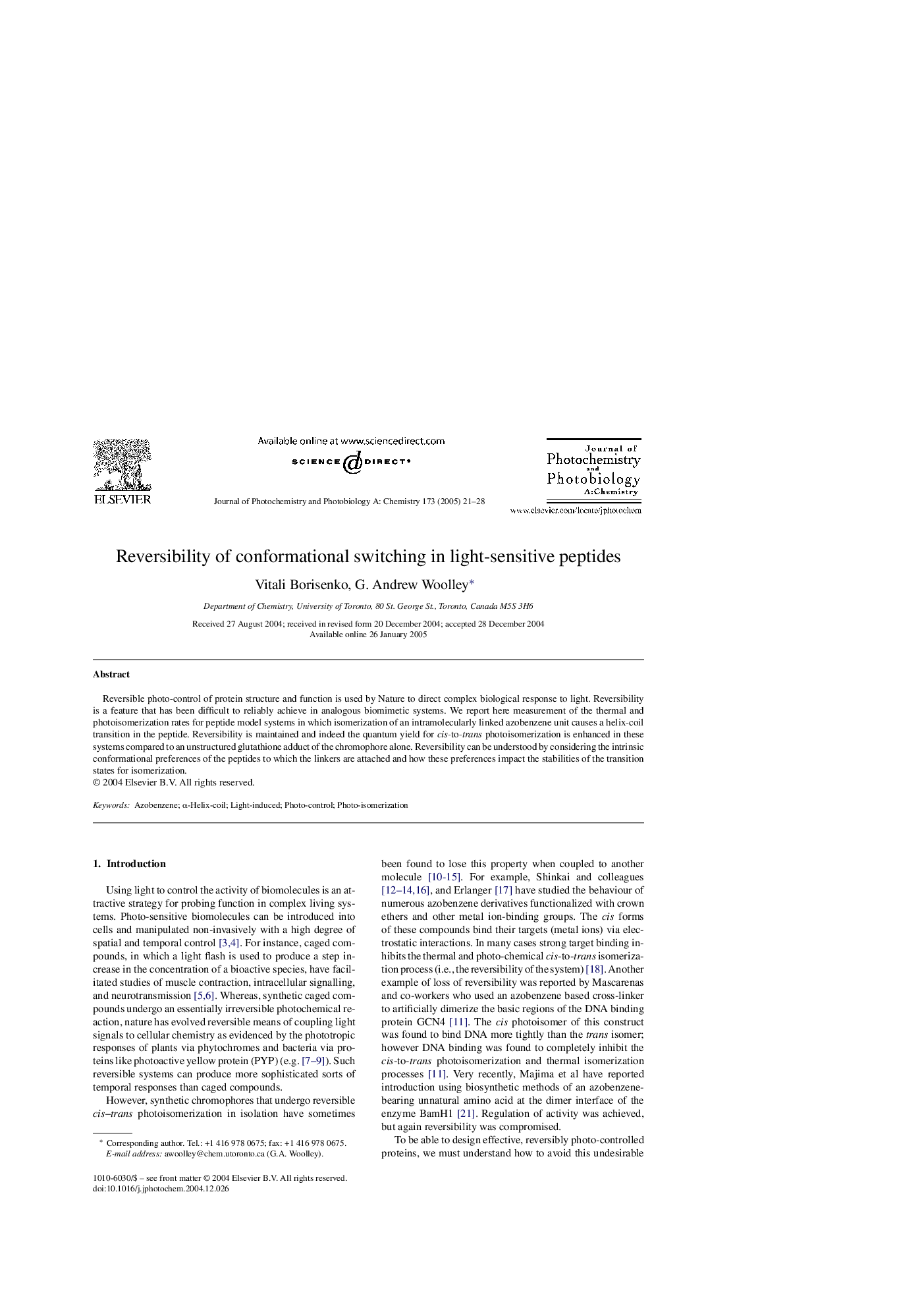| Article ID | Journal | Published Year | Pages | File Type |
|---|---|---|---|---|
| 9605586 | Journal of Photochemistry and Photobiology A: Chemistry | 2005 | 8 Pages |
Abstract
Reversible photo-control of protein structure and function is used by Nature to direct complex biological response to light. Reversibility is a feature that has been difficult to reliably achieve in analogous biomimetic systems. We report here measurement of the thermal and photoisomerization rates for peptide model systems in which isomerization of an intramolecularly linked azobenzene unit causes a helix-coil transition in the peptide. Reversibility is maintained and indeed the quantum yield for cis-to-trans photoisomerization is enhanced in these systems compared to an unstructured glutathione adduct of the chromophore alone. Reversibility can be understood by considering the intrinsic conformational preferences of the peptides to which the linkers are attached and how these preferences impact the stabilities of the transition states for isomerization.
Related Topics
Physical Sciences and Engineering
Chemical Engineering
Bioengineering
Authors
Vitali Borisenko, G. Andrew Woolley,
